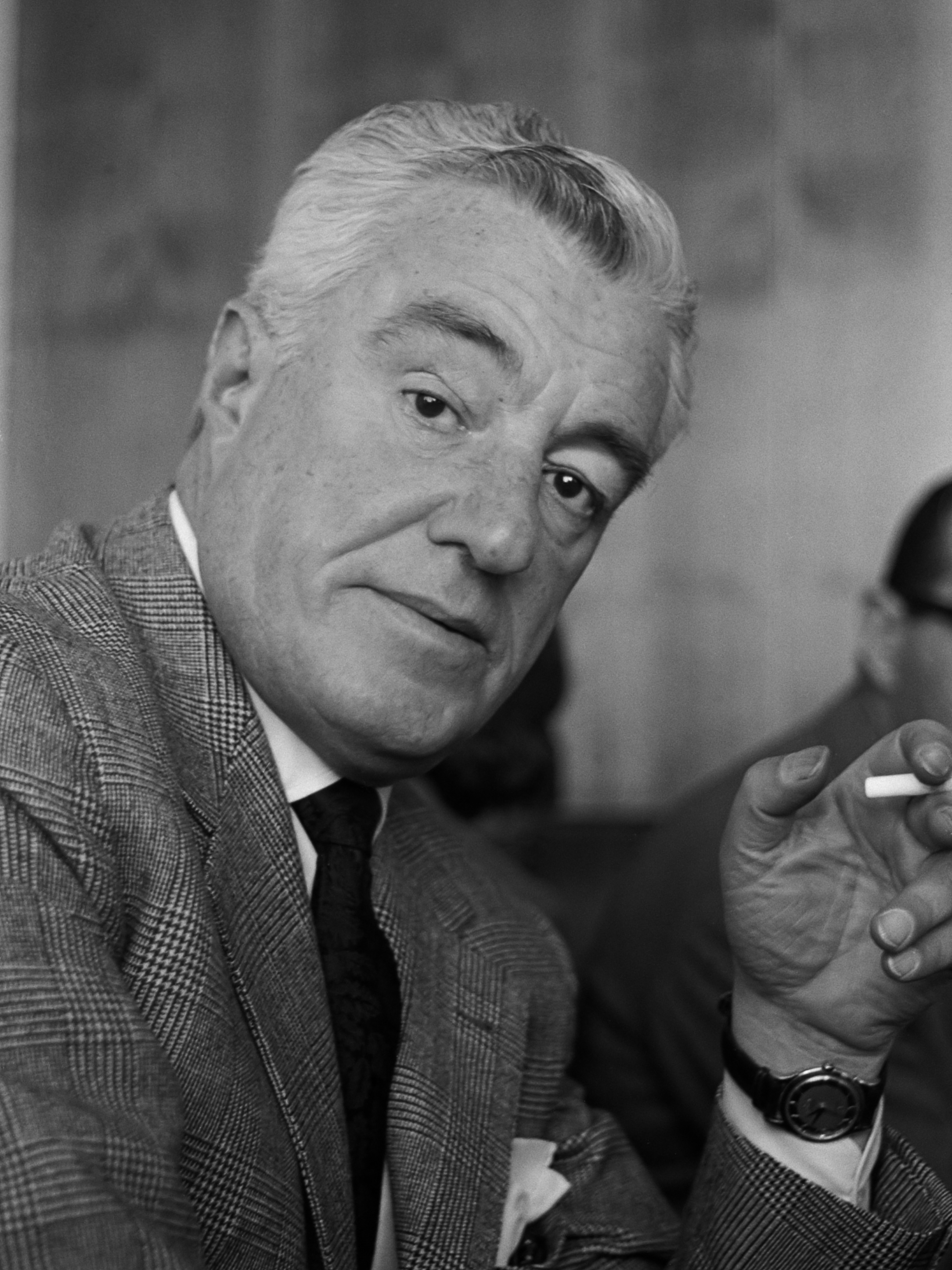Columns / Vittorio de Sica, Pillar of Neo-Realism (1920-1974)
by Jaap Mees
Vittorio De Sica was one of the most influential Italian filmmakers. Together with Roberto Rossellini, he formed the Neo Realist movement. Films with non- actors, shot in the streets about social relevant subjects like unemployment, a poor health system or a lack of housing etc. De Sica grew up in Naples, he started out as an office clerk before he joined Tatiana Pavlova's Theatre Company as an actor. The first film he directed was 'Rose Scarlatte' in 1940.

Free of artificiality
For Vittorio De Sica, cinema is "a struggle against the absence of human solidarity, a word in favour of the poor and unhappy". After being a matinee idol with making sophisticated light-hearted entertainment, he developed a more complex and profound style, by working with non-professional actors and carefully selected subjects. The turning point was the film 'The Children are Watching' (1942), a movie about adulterous parents seen through the eyes of their seven years old son. This film marks the first collaboration of De Sica with screenwriter Cesare Zavattini (1902-1989), one of the most creative partnerships in the history of cinema; comparable with the collaboration between Michael Powell and Emeric Pressburger. Zavattini, a committed Marxist, formulated his vision of a cinema of truth, free of artificiality and pretence, which would concern itself with the problems of everyday people. Zavattini and De Sica worked on nine films together, the most well known being: 'Bicycle Thieves' (1949), 'Umberto D.' (1952) and 'Miracle in Milan' (1951). On these three films I will now focus...
First 'Bicycle Thieves', Oscar winner for Best Foreign film in 1949 and one of the best films ever made, is a deeply humane, immensely powerful, but also lyrical film. It deals with Antonio, an unemployed labourer, who eventually finds a job as a municipal 'bill sticker'. He can only get this job, when he has a bicycle. So he goes to the pawnshop to change his last belongings for a bike. Then the bicycle is stolen and together with his young son Bruno he is going on a search all through Rome. He doesn't find the bike and in complete despair, he nicks a bicycle himself, outside a football stadium. He gets caught, however. De Sica dedicated 'Bicycle Thieves' " to the suffering of the humble". Both the tormented Antonio and innocent Bruno, played by Lamberto Maggiorani and Enzo Staiola, are magnificent. The powerful Hollywood producer David O Selznick offered De Sica to produce this film on one condition: Cary Grant should play the lead. Thank God, De Sica refused. It's a bit like asking Ken Loach to direct the new James Bond film.
Andre Bazin
The great French film critic/ philosopher Andre Bazin, inspiration of the New Wave, on Bicycle Thieves commented: "The supreme success of De Sica, whom others have so far been able only to approach, lies in having discovered the cinema dialectic that overcome the contradiction between spectacular action and the event. In that the Bicycle Thief is one of the prime examples of pure cinema. No more actors, no more story, no more staging, that is finally in the perfect aesthetic illusion of reality: no more cinema". In a 'Miracle in Milan' Lolotta, rears a baby found under a cabbage. After she dies, the baby, Toto, is taken to an orphanage, which he leaves to end up as the guest of a vagabond living in a slum on the outskirts of Milan. With his generosity and ingenuity Toto wins the sympathy of the poor and convinces them to try and improve their condition. De Sica's themes of the decency of man and his hopes and aspirations ring through the surreal settings and imagery. Miracle in Milan won the Golden Palm in Cannes in 1951.
Umberto D
'Umberto D.' is about an elderly man in his seventies living on a state pension, which is far insufficient. His only companion is a small dog, called Flik. He rents a room from a greedy and unpleasant landlady, who threatens to kick him out every time he is late with the rent.
The only person in the house he talks to is a young house maid, Maria, who is pregnant, but doesn't know which of her two befriended soldiers is responsible for that. One week Umberto has to go to hospital for tonsillitis. When he comes back there are workmen in his room and the wallpaper is stripped from his walls. He feels depressed, Maria visits him and gives him some cake, he doesn't feel like eating. He takes his dog and tries to find a good home for him, but can't find it. He sees a young girl in the park, who is fond of Flik. He offers her the dog, but her mother disapproves. In utter despair Umberto takes Flik in his arms and waits at the rail track for the next train. When the train arrives, the dog's survival instinct is so strong that he manages to escape, not only saving it's own life but that of Umberto too. 'Umberto D' is a beautifully observed gem with excellent acting and a sincere concern with the fate of the underdog.
After a period of decline, Vittorio De Sica comes back with 'The Garden of Finzi Contis' (1971), about a Jewish aristocratic family, who ignore the Nazis during the 2nd World War, until it's too late. This film made the gorgeous Dominique Sanda into a star. De Sica last part, as himself, was in Ettore Scola's film 'We All Loved Each Other So Much' in 1974, which was released after the Maestro's death.
